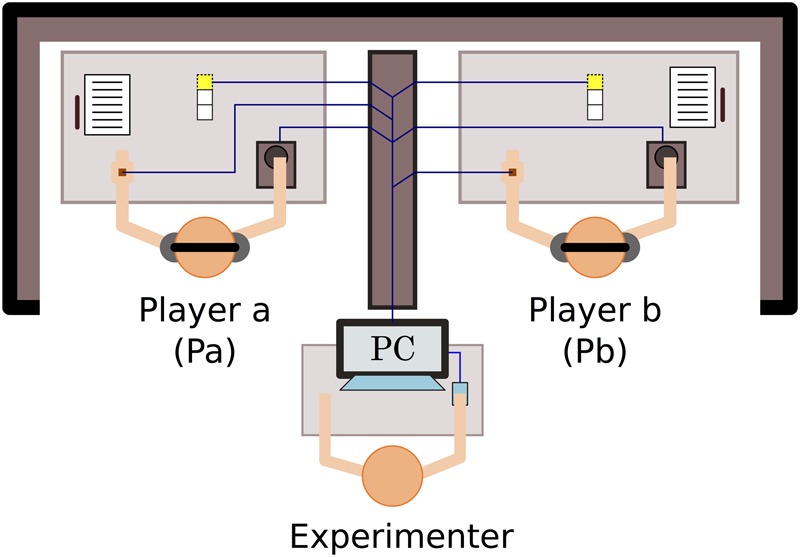FIGURE 1.

Experimental setup of perceptual crossing paradigm. The two participants can only engage with each other via a human–computer interface that reduces their scope for embodied interaction to a minimum of translational movement and binary tactile sensation. Each player’s interface consists of two parts: a trackball that controls the linear displacement of their virtual avatar, and a hand-held haptic feedback device that vibrates at a constant frequency for as long as a player’s avatar overlaps with another virtual object and remains off otherwise. Three small lights on each desk signal the start, halftime (30 s), and completion of each 60-s trial. Figure originally published in Froese et al. (2014a).
